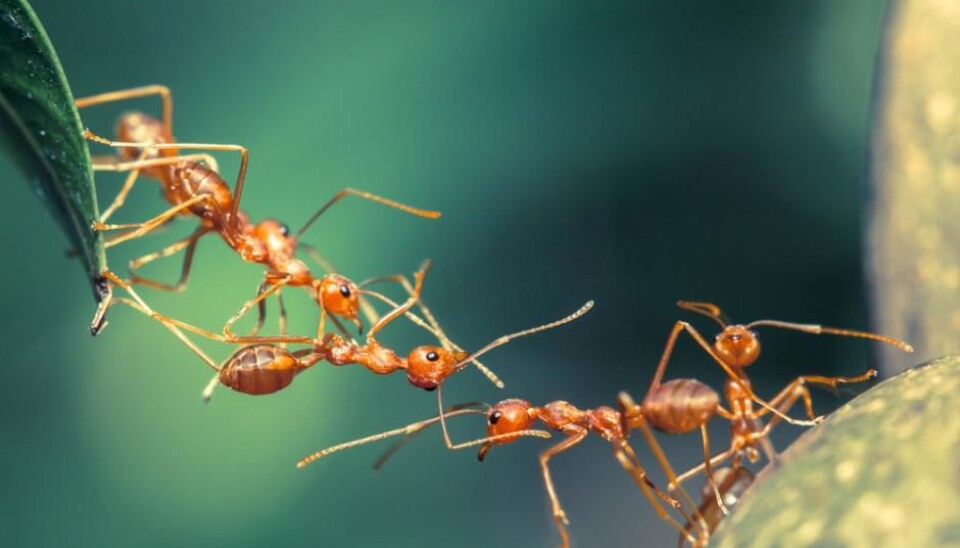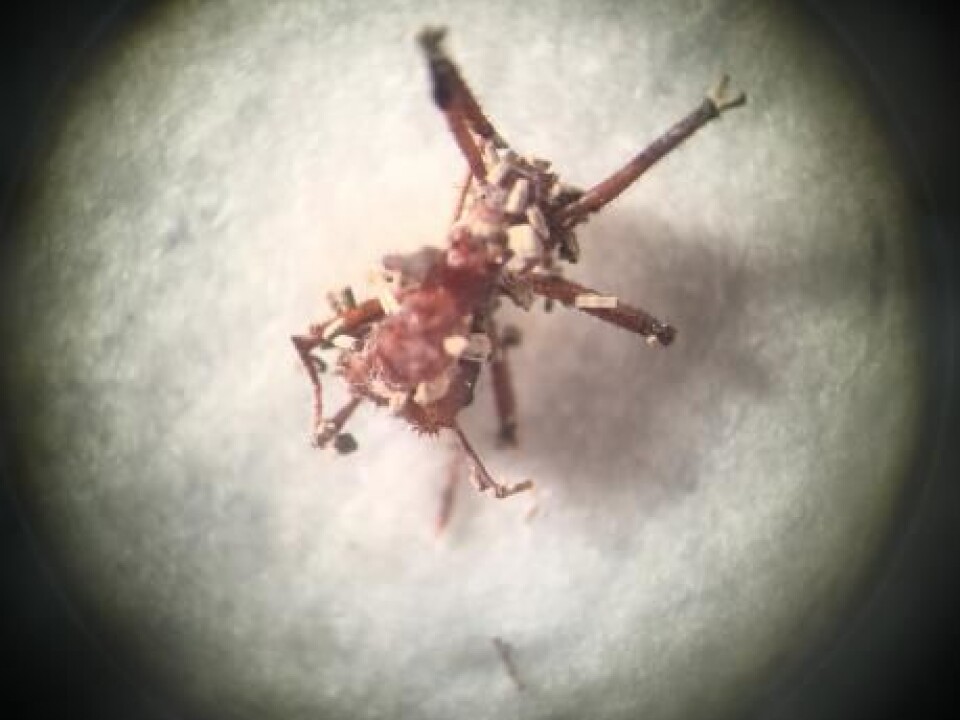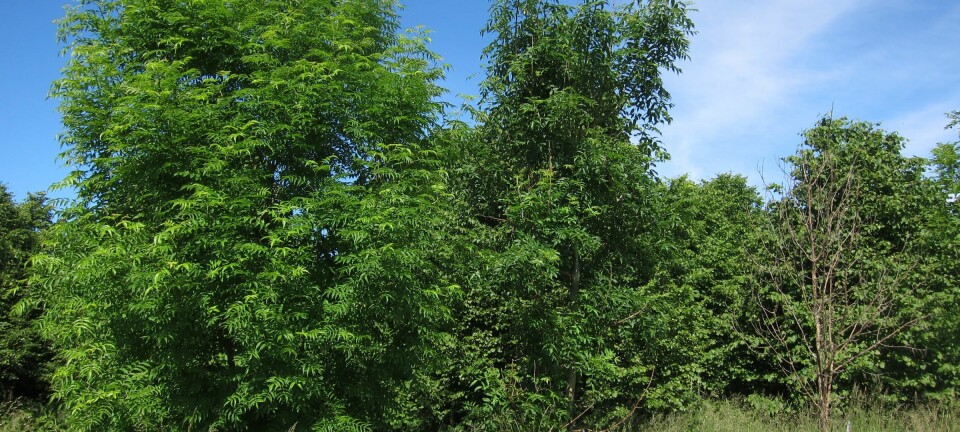
Ants make medicine out of tree sap and fungi
Ants vaccinate each other against diseases and make medicine out of tree sap.
It is cold outside, but inside the basement of the research centre for social evolution belonging to the University of Copenhagen, Denmark, the temperature is kept at a near constant 24 to 25 degrees Celsius.
This tropical climate makes it possible for millions of ants to live in small blue boxes, blissfully unaware that they are no longer at home in the Panamanian rain forest.
At the centre, scientists observe the ant colonies day in, day out, to learn more about their social structures and the unique way in which the small creatures fight disease.
“The colonies should be hotspots for disease, but interestingly enough we don’t see many outbreaks of virulent diseases that turn into epidemics. We believe It’s because the ants have many protection mechanisms against parasites,” says Line Vej Ugelvig, an assistant professor at the Department of Biology, University of Copenhagen.

Ugelvig’s research is revealing the intelligent ways in which ants fight disease.
Forest ants use tree sap like we use antibiotics
Ants have developed some cunning tactics to keep the colony clean of bacteria and fungal parasites.
“To reduce the level of parasites in the colony, wood ants collect tree resin and incorporate it into the material that make up their nest. Resin has antimicrobial properties and therefore makes it difficult for potentially parasitic microbes like bacteria and fungi to thrive,” says Ugelvig.
Ants drag huge quantities of this sticky material back to the colony. Some forest ant colonies have collected up to 20 kilograms of resin, says Hans Joachim Offenberg, who also studies ants at the Department of Bioscience, Aarhus University, Denmark.
“Every time the ants go out to collect the resin, they’re almost entirely disinfected, because it contains antimicrobial substances that fight bacteria,” says Offenberg.
Read More: Ants in supercolonies defy evolution
Ants vaccinate each other
The more commonly known garden ant also fights disease to prevent infection from forest fungi.
“Some fungi are parasites of insects, like ants. If such a fungal spore lands on an ant, it’s able to grow into the ant’s body. It will spread throughout the ant’s body, and if the dose is high the ant will eventually die. The fungal spores may spread and infect others in the nest, just like people shaking hands,” says Ugelvig.
But the invasive garden ant has a solution.
“The ants use their mouths to remove the fungal spores from themselves and others. This way, they minimise the spore dose of exposed individuals and prevent the fungus from spreading from one ant to the whole colony,” says Ugelvig.
This minimises the risk of a disease outbreak in the colony, and also vaccinates the helping ants against future fungi attacks.
“When the ants help to remove the fungal spores from an exposed ant, they may get infected by a small dose of the fungus, which works like a vaccine,” says Ugelvig.
Even though ants do not have immune cells as we do, this ant ‘vaccination’ effectively follows the same principle as our vaccines.
Read More: Ants - man's best friend?
Ant glands contain medicine
Ants also have another inbuilt mechanism to fight disease.
“Ants have a gland that produces chemicals that strike down bacteria and fungal parasites. It’s an evolutionary response to protect against disease and protects ants from most infections,” says Offenberg.
Some ants also have a structure on the breast that resembles two white spots, which produces antimicrobial substances.
“The antimicrobial substances help fungus-growing ants to keep their cultivated fungi free of diseases,” says Ugelvig.
Read More: Ants in gladiatorial combat reveal unique collaboration
Ants sacrifice themselves for the colony
But there are some cases, which are beyond treatment.
“It’s interesting to see how sick ants seem to stay away from areas of the colony where the brood is located. It’s as if they instinctively know that the brood have thinner skin and thus are more susceptible to fungal disease,” says Ugelvig.
Infected ants go so far as to stay away from the colony if they sense that there is no chance of survival.
“Ants can sense when they’re about to die. So they leave their home and wait for the end,” says Veronica Sinotte, who is studying for her master’s degree at the Center for Social Evolution at the University of Copenhagen.
Read More: Ants care for their sick to avoid epidemics
Good hygiene keeps nests disease free
Ants are ultra-hygienic and constantly keep each other clean to keep disease at bay, says Offenberg.
At the same time, they have very specific waste-disposal systems, in which every ant plays a part.
“Ants have a waste disposal site outside their nest. They’ve organised themselves so that every ant puts leaves and compost on the paths inside the nest, and then the older ants carry the waste and deposits it outside the colony,” says Offenberg.
Ants are the masters of cooperation and shared roles. Learn about other basic research projects in our special theme on basic research.
This article is part of the Basic Research theme
-------------
Read the Danish version of this article on Videnskab.dk
Translated by: Catherine Jex











